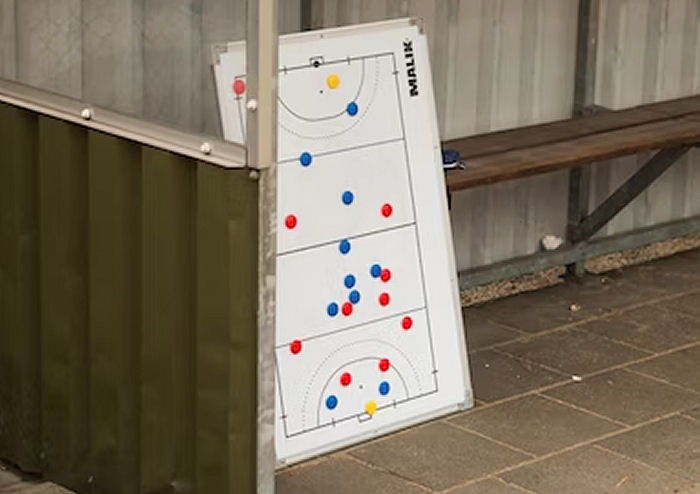 source : unsplash
source : unsplash
There are few managers in the world of football as tactically astute and innovative as Pep
Guardiola. Known for his dynamic and fluid approach to the game, Guardiola has cemented his
status as a premier strategist and game reader, achieving impressive success during his tenure at
Manchester City.
Since his beginnings with Manchester City, Guardiola has inspired both staff, players and fans
worldwide. The essence of his philosophy - high-intensity pressing, possession-based football, and
versatile formations - is well known, yet it's the constant evolution of these strategies that keeps him
one step ahead of the opposition.
It is also this philosophy which has increased the betting interest of fans, who can now bet on not
just the game results but also on tactical in-game strategies. In doing so, fans can use similar
promotional betting offers similar to American
Football betting promos, creating a stronger sense of
community and fan engagement across the global fan sphere.
But before we can understand how and why fans are turning to betting promos when rooting for
Manchester City, it is crucial that we understand how Guardiola has transformed his team using
tactical changes and analysis.
Arrival at Manchester City
Arriving at Manchester City in the summer of 2016 after successful spells with Barcelona and Bayern
Munich, Guardiola brought with him a vision of football that was transformative. His signature style,
famously known as 'tiki-taka', was defined by intricate short passes, high possession, and an
aggressive pressing game. To facilitate this, Guardiola often relied on formations like 4-3-3 or 4-1-4-
1, emphasizing control in the midfield and fluid interchange between the players.
However, the Premier League presented a different challenge altogether. The intense, fast-paced
nature of the English game tested Guardiola's philosophy, forcing him to adapt and evolve.
Adaptation and innovation: The inverted full-backs
One of Guardiola's first significant tactical shifts at Manchester City was the implementation of
'inverted full-backs'. Traditionally, full-backs run along the flanks, providing width and crosses from
wide areas. But Guardiola saw another potential use for them. Rather than staying wide, his full-
backs would drift centrally, often forming a three-man midfield with the defensive midfielder. This
was a striking deviation from the norm and an innovation that confused many opponents. The move
helped to bolster the midfield, aiding ball control and distribution, while also ensuring defensive
solidity. Moreover, it gave wingers the freedom to stay wide, stretching the opposition defense and
creating space for attacks.
Individual Transformations
Guardiola's tenure at Manchester City is peppered with instances of players being molded and
adapted to suit his tactical needs. His willingness to repurpose players into roles they were
previously unfamiliar with is a testament to his unique vision and trust in his squad.
Two standout examples are Fabian Delph and Oleksandr Zinchenko. Despite being a central
midfielder, Delph was frequently deployed as a left-back, proving to be a reliable presence. Similarly,
Zinchenko, who began his career as an attacking midfielder, found his niche in the left-back position
under Guardiola.
Guardiola's innovative use of attacking midfielders Kevin De Bruyne and Bernardo Silva as '
free eights' also deserves special mention. Playing deeper than traditional 'number 10' playmakers but
with more freedom than typical central midfielders, these 'free eights' became critical in Guardiola's
setup. Their ability to operate in the spaces between the opposition's midfield and defense and
make late runs into the box added a fresh dimension to City's attack, often creating numerical
overloads and goalscoring opportunities.
The double pivot and success
Guardiola's tactical fluidity was perhaps best exemplified during the 2019-20 season. To maximize
control in midfield, he occasionally deployed a 'double pivot' of Rodri and İlkay Gündoğan. This
formation provided a solid base for City's attacking players to perform and offered increased
defensive stability.
This adaptability and innovation bore fruit. Manchester City won the Premier League in the 2017-18
and 2018-19 seasons, securing a
record 100 points in the former - a testament to their dominance.
The 2018-19 season also saw them secure the domestic treble, an unprecedented achievement in
English men's football.
Masterclass in adaptive football management
Pep Guardiola's tactical evolution at Manchester City is a masterclass in adaptive football
management. By continually reassessing his strategies and demanding versatility from his players,
Guardiola has not only accumulated an enviable trophy haul but has also significantly influenced
how the game is played in the English Premier League.
His tenure at Manchester City underscores the fact that in football, as in any sport, adaptability and
innovation are key to maintaining success. As the game continues to evolve, it will be fascinating to
see how Guardiola and his peers adapt, innovate, and redefine football tactics in the coming
seasons. With his proven ability to challenge norms and redefine roles, there's no doubt that
Guardiola's influence will continue to resonate in the landscape of modern football.
-
Pep Guardiola profile